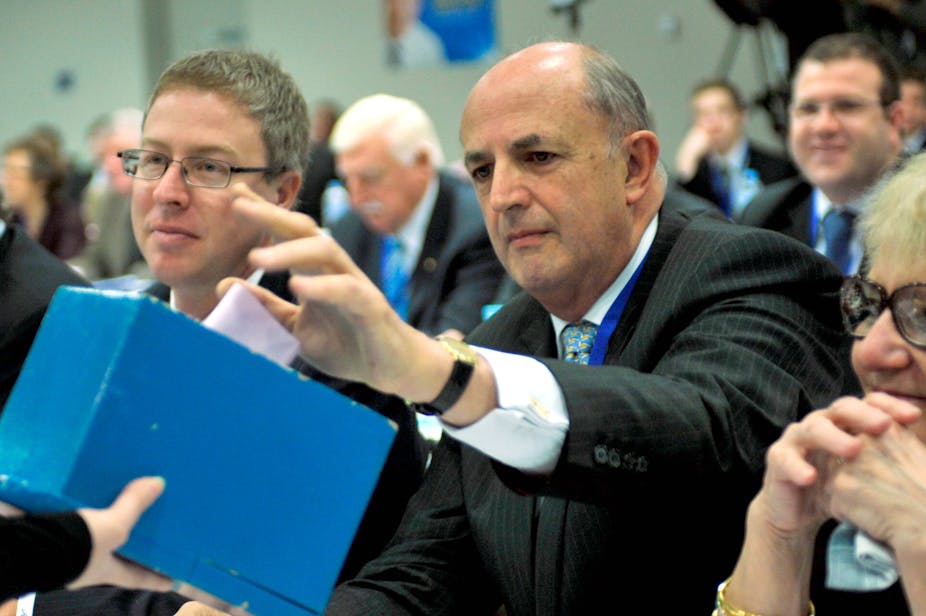I have some very fond memories of the mid 1980s. The fluoro shirts, the feathered haircuts, dancing to Wham! at the local blue light disco.
But this week I’m having a disturbing ‘80s industrial relations flashback.
First we had the HR Nicholls society – a neo-con industrial relations think tank founded in 1986 – drafting an ex-Liberal party staffer to aid their IR lobbying effort.
Then, on Tuesday, former Workplace Relations Minister Reith, in the wake of defeat in his run for the Liberal Party presidency argued that the Liberal party needed to take up the cudgel of further IR deregulation.
He argued that the Australian labour market remains highly inflexible and that employers are crying out for change IR practice and in Liberal party policy. Is this really so? Does the current industrial relations regime really not “deliver” for employers, are employers really wishing for some more change in IR?
Consensus on IR
After the uninspiring “Workchoices: Dead, buried and cremated” election we had to endure in mid-2010, I thought we had gotten close to a consensus among our political leaders that IR was, at least for a while, settled. I say this partly because this is what (most) of the Liberal leadership professed publicly throughout the election campaign and indeed the rest of 2010. They had a very good reason to.
In the hard-fought 2007 election, where campaigning focussed squarely on IR, the conservatives and their radical workplace approach was resoundingly rejected by the electorate. This scared them and, on balance, I think the Liberal Workchoices “fright” was greater than the de-regulationist IR instinct of many in the party
With a few exceptions, employers are not champing for change in industrial relations as they were three decades ago. Since the 1980s we have seen massive changes in the nature of work, in the demographics of the labour force and in the system which sets the IR “rules”.
The changes in the Australia labour market have actually been among the most thoroughgoing of any OECD country. During this time we have also witnessed several major changes in the regulatory framework. Putting Fair Work in its very recent historical place, we can see that it is the third major rework of the regulatory framework in the past fifteen years.
It feels to me that employers have had enough change and, if anything, want to tweak the current system. Most have settled into the workmanlike practices needed to adapt to and embed the (latest) new system.
What is Fair Work?
So what is the Fair Work industrial relations regime? The new system is explicitly based on the promotion of workplace flexibility. It differs in fundamental ways from its (Workchoices) predecessor in how it aims to achieve this end.
Workchoices sought flexibility through the individualisation of industrial relations through the promotion, among other things, of individual statutory contracts; AWAs. Simultaneously it re-regulated the minimum standards “floor” which sat underneath individual contracts. Research we conducted at the University of Sydney showed that this regime had a profound impact on the work and lives of some employees, most particularly women working in low-paid occupations such as cleaning, childcare and retail.
The Fair Work system attempts to achieve flexibility in a different way. Fundamentally it pivots on collective bargaining, underpinned by a system of individual rights. The premise here is that groups of workers can negotiate in “good faith” appropriate workplace practices, represented by unions, or others, overseen by an umpire in the form of Fair Work Australia. The outcomes of their negotiations are underpinned by a safety net of conditions provided in modern awards and the 10 national employment standards.
If it ain’t broke …
It is hard to speak of a generalised “employer reaction” to the new regime, reflecting the diversity of the Australian sectors and labour markets.
For mining employers and some in transport and manufacturing, the primary concern is with aspects of the new bargaining framework. For employers in hospitality and retail, the implementation of the new minimum standards system has caused unease. But if we take a step back, the employer reaction to the system as a whole - and in these particular areas - has been rather muted. This in part reflects the flexibilities than most employers recognise are available to them both within and beside the Fair Work system.
Whether you like it or not, Australia has a highly casualised (pay per hour) workforce, this remains largely untouched by the Fair Work system. Employees and employers are free to negotiate “individual flexibility arrangements” within the collective bargaining system and while there are some protections, for example these arrangements are subject to no disadvantage tests, they can be made over a broad range of matters. “Good faith” collective bargaining, which the Fair Work Act promotes, is flourishing.
For the time being, Peter Reith and his friends in the HR Nicholls Society, are dancing to an old tune.

